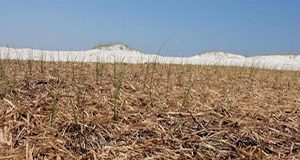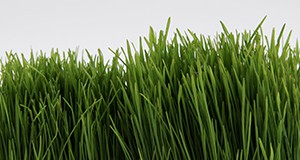Perennial coastal grasses such as sea oats have long been recognized as the biological engineers of our increasingly stressed beaches and coastal dunes. Sea oats build dunes by capturing blowing sand and stabilizing it, and they’re often planted after dunes have been eroded, fragmented, or destroyed. Managers have tried commercial fertilizers and water-absorbing gels to ensure planted sea oats survive and thrive, but these products are not always effective and can be expensive. Removal of natural beach litter, called “wrack” and defined as “algae, grasses, driftwood, fruits, seeds, and carrion, along with cultural litter,” has frequently had the undesired effect of weakening the establishment and growth of sea oats. A relatively cheap and effective method to restore them is to reproduce the beneficial effects of this beach litter with “surrogate wrack.” This 4-page fact sheet written by Natalie Hooton, Debbie Miller, Mack Thetford, and Sean Claypool and published by the Department of Wildlife Ecology and Conservation describes the promising results of a study into the feasibility and effectiveness of surrogate wrack to help sea oats become established and grow more quickly and vibrantly to restore dunes and beaches.
edis.ifas.ufl.edu/uw409
Tag: West Florida REC
Guide to Olive Tree Nutrition in Florida
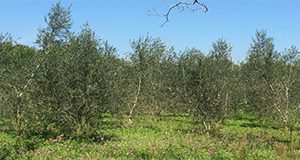 A burgeoning olive industry already exists in the southeastern United States, but research and Extension information regarding olive fertilization recommendations in Florida is limited. While there are data and recommendations for olive from the University of California, the University of Georgia (UGA), and other institutions around the world, there are no data from which we can derive Florida-specific recommendations. This 6-page fact sheet uses many of the existing recommendations for mature, high-density, and traditional grove spacing as guidelines until data specific to Florida production are generated. It discusses leaf tissue sampling procedures, leaf tissue sufficiency ranges, nitrogen fertility, phosphorus and potassium fertility, boron, concerns for olive production in Florida, and other resources for olive production in the state. Written by Michael J. Mulvaney, Rao Mylavarapu, Peter C. Andersen, Mack Thetford, and Jennifer L. Gillett-Kaufman, and published by the UF Agronomy Department, May 2016.
A burgeoning olive industry already exists in the southeastern United States, but research and Extension information regarding olive fertilization recommendations in Florida is limited. While there are data and recommendations for olive from the University of California, the University of Georgia (UGA), and other institutions around the world, there are no data from which we can derive Florida-specific recommendations. This 6-page fact sheet uses many of the existing recommendations for mature, high-density, and traditional grove spacing as guidelines until data specific to Florida production are generated. It discusses leaf tissue sampling procedures, leaf tissue sufficiency ranges, nitrogen fertility, phosphorus and potassium fertility, boron, concerns for olive production in Florida, and other resources for olive production in the state. Written by Michael J. Mulvaney, Rao Mylavarapu, Peter C. Andersen, Mack Thetford, and Jennifer L. Gillett-Kaufman, and published by the UF Agronomy Department, May 2016.
http://edis.ifas.ufl.edu/ag405
Turfgrass Herbicides: Mechanisms of Action and Resistance Management
Herbicides are an effective tool for controling weeds in turfgrass; however, weeds can become resistant to herbicides and create significant problems for turfgrass production. The best way to combat herbicide resistance is to rotate herbicides with different mechanisms of action (MOA) because using herbicides with different MOAs makes it more likely that weeds resistant to one herbicide will encounter an herbicide to which they are not resistant. This 4-page fact sheet focuses on how to create an herbicide program that uses different MOAs to manage resistant weeds. Written by Ramon G. Leon and Bryan Unruh, and published by the UF Department of Agronomy, August 2015.
http://edis.ifas.ufl.edu/ag398
Doveweed (Murdannia nudiflora) Control in Warm-Season Turfgrass Species
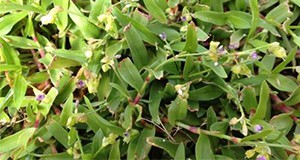 Doveweed is an aggressive, naturalized summer annual weed that rapidly invades warm-season turfgrass species, especially in residential lawns, and few herbicides can effectively control it. Because of these challenges, a well-designed management strategy is necessary for doveweed control. This 4-page fact sheet describes identification, growth requirements, chemical control and cultural practices. Written by Ramon G. Leon and Bryan Unruh, and published by the UF Department of Agronomy, June 2015.
Doveweed is an aggressive, naturalized summer annual weed that rapidly invades warm-season turfgrass species, especially in residential lawns, and few herbicides can effectively control it. Because of these challenges, a well-designed management strategy is necessary for doveweed control. This 4-page fact sheet describes identification, growth requirements, chemical control and cultural practices. Written by Ramon G. Leon and Bryan Unruh, and published by the UF Department of Agronomy, June 2015.
http://edis.ifas.ufl.edu/ag395
2013 Sweet Corn Variety Performance Trial, Jay, Florida
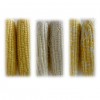 This 5-page fact sheet summarizes the 2013 sweet corn variety trial at the UF West Florida Research and Education Center Jay Research farm in Jay, Florida. It shows the performance of fifteen commercial and experimental Sh2 (supersweet) sweet corn varieties. This data only represents one year and one location; test results should be considered over several years and locations before final conclusions are valid. Written by Darcy Telenko, Libby Johnson, and William Wendt, and published by the UF Department of Horticultural Sciences, November 2014.
This 5-page fact sheet summarizes the 2013 sweet corn variety trial at the UF West Florida Research and Education Center Jay Research farm in Jay, Florida. It shows the performance of fifteen commercial and experimental Sh2 (supersweet) sweet corn varieties. This data only represents one year and one location; test results should be considered over several years and locations before final conclusions are valid. Written by Darcy Telenko, Libby Johnson, and William Wendt, and published by the UF Department of Horticultural Sciences, November 2014.
http://edis.ifas.ufl.edu/hs1236
Violet Biology and Management in Turf
 Violets (Viola spp.) are diverse winter annuals and perennials. Perennials form rhizomes or long stolons. Many have heart-shaped leaves on long petioles and have a rosette growth habit. Some have linear leaves and others have palmate leaves. Flowers are generally purple, but can be white, pink or yellow. They reproduce by seed or, when produced, rhizomes. This 2-page fact sheet was written by Darcy E. P. Telenko, Barry J. Brecke, Ramon Leon, and J. Bryan Unruh, and published by the UF Department of Environmental Horticulture, December 2013.
Violets (Viola spp.) are diverse winter annuals and perennials. Perennials form rhizomes or long stolons. Many have heart-shaped leaves on long petioles and have a rosette growth habit. Some have linear leaves and others have palmate leaves. Flowers are generally purple, but can be white, pink or yellow. They reproduce by seed or, when produced, rhizomes. This 2-page fact sheet was written by Darcy E. P. Telenko, Barry J. Brecke, Ramon Leon, and J. Bryan Unruh, and published by the UF Department of Environmental Horticulture, December 2013.
http://edis.ifas.ufl.edu/ep496
Spreading Dayflower Biology and Management in Turf
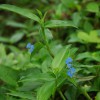 Spreading dayflower (Commelina diffusa) is a succulent annual that produces freely branched smooth stems. Leaves are broadly lance-shaped with closed sheaths. Sheaths are short with a few soft hairs on the upper margin. Flowers have three blue petals in a leaf-like structure open on the margins. Reproduction occurs via seed and stem fragments. This 2-page fact sheet was written by J. Bryan Unruh, Darcy E. P. Telenko, Barry J. Brecke, and Ramon Leon, and published by the UF Department of Environmental Horticulture, December 2013.
Spreading dayflower (Commelina diffusa) is a succulent annual that produces freely branched smooth stems. Leaves are broadly lance-shaped with closed sheaths. Sheaths are short with a few soft hairs on the upper margin. Flowers have three blue petals in a leaf-like structure open on the margins. Reproduction occurs via seed and stem fragments. This 2-page fact sheet was written by J. Bryan Unruh, Darcy E. P. Telenko, Barry J. Brecke, and Ramon Leon, and published by the UF Department of Environmental Horticulture, December 2013.
http://edis.ifas.ufl.edu/ep497
2013 Evaluation of Non-Irrigated Early-Maturing Cotton Varieties in Jay, Florida
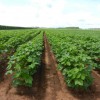 This report includes a summary of the 2013 early-season cotton Official Variety Trial in Jay, Florida. It shows the performance of 11 cotton varieties. This data represents only one year and one location, and readers are cautioned that test results should be considered over several locations and years before final conclusions are valid. This 5-page fact sheet was written by Darcy Telenko and Michael Donahoe , and published by the UF Department of Agronomy, January 2014.
This report includes a summary of the 2013 early-season cotton Official Variety Trial in Jay, Florida. It shows the performance of 11 cotton varieties. This data represents only one year and one location, and readers are cautioned that test results should be considered over several locations and years before final conclusions are valid. This 5-page fact sheet was written by Darcy Telenko and Michael Donahoe , and published by the UF Department of Agronomy, January 2014.
http://edis.ifas.ufl.edu/ag378
Black Medic Biology and Management in Turf
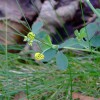 Black medic (Medicago lupulina) is a dark green annual with spreading, prostrate growth. Leaves are alternate with three leaflets on square stems. Leaflets are obovate to elliptic, toothed near the tip, and have a small spur on the tip. Bright yellow flowers are produced in tight, compressed clusters at leaf axils. Reproduction occurs via seed in tightly coiled black seed pods. This 2-page fact sheet was written by Barry J. Brecke, Ramon Leon, J. Bryan Unruh, and Darcy E. P. Telenko, and published by the UF Department of Environmental Horticulture, December 2014.
Black medic (Medicago lupulina) is a dark green annual with spreading, prostrate growth. Leaves are alternate with three leaflets on square stems. Leaflets are obovate to elliptic, toothed near the tip, and have a small spur on the tip. Bright yellow flowers are produced in tight, compressed clusters at leaf axils. Reproduction occurs via seed in tightly coiled black seed pods. This 2-page fact sheet was written by Barry J. Brecke, Ramon Leon, J. Bryan Unruh, and Darcy E. P. Telenko, and published by the UF Department of Environmental Horticulture, December 2014.
http://edis.ifas.ufl.edu/ep494
Sedge Biology and Management in Turf
 Members of the sedge family have leaves that are composed of a blade, sheath, and ligule. The leaf sheath is closed and the ligule is often absent, and when present is tiny. Stem structure is often triangular.This 3-page fact sheet was written by D. E. P. Telenko, Ramon Leon, J. Bryan Unruh, and B. J. Brecke, and published by the UF Department of Environmental Horticulture, December 2014.
Members of the sedge family have leaves that are composed of a blade, sheath, and ligule. The leaf sheath is closed and the ligule is often absent, and when present is tiny. Stem structure is often triangular.This 3-page fact sheet was written by D. E. P. Telenko, Ramon Leon, J. Bryan Unruh, and B. J. Brecke, and published by the UF Department of Environmental Horticulture, December 2014.
http://edis.ifas.ufl.edu/ep492
Erect and Prostrate Spurge Biology and Management in Turf
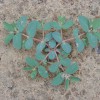 Erect and prostrate spurges are erect or upright annuals with branched stems. Leaves are opposite and not equal. Stems produce “milky sap.” A large number of spurge species occur in Florida. Reproduction occurs via seed. This 2-page fact sheet was written by J. Bryan Unruh, Darcy E. P. Telenko, Barry J. Brecke, and Ramon Leon, and published by the UF Department of Environmental Horticulture, December 2013.
Erect and prostrate spurges are erect or upright annuals with branched stems. Leaves are opposite and not equal. Stems produce “milky sap.” A large number of spurge species occur in Florida. Reproduction occurs via seed. This 2-page fact sheet was written by J. Bryan Unruh, Darcy E. P. Telenko, Barry J. Brecke, and Ramon Leon, and published by the UF Department of Environmental Horticulture, December 2013.
http://edis.ifas.ufl.edu/ep495
2013 Evaluation of Non-Irrigated Mid- to Full-Season Maturing Cotton Varieties in Jay, Florida
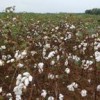 This report includes a summary of the 2013 mid- to full-season cotton Official Variety Trial in Jay, Florida. It shows the performance of 16 cotton varieties. This data represents only one year and one location, and readers are cautioned that test results should be considered over several locations and years before final conclusions are valid. This 5-page fact sheet was written by Darcy E. P. Telenko and Michael Donahoe, and published by the UF Department of Agronomy, January 2014.
This report includes a summary of the 2013 mid- to full-season cotton Official Variety Trial in Jay, Florida. It shows the performance of 16 cotton varieties. This data represents only one year and one location, and readers are cautioned that test results should be considered over several locations and years before final conclusions are valid. This 5-page fact sheet was written by Darcy E. P. Telenko and Michael Donahoe, and published by the UF Department of Agronomy, January 2014.
http://edis.ifas.ufl.edu/ag377
